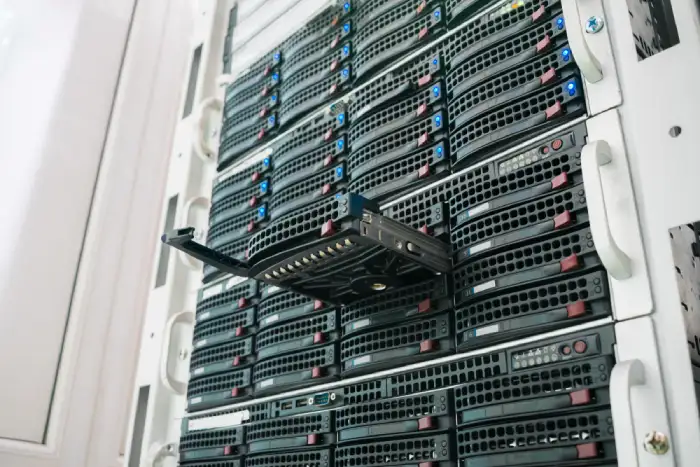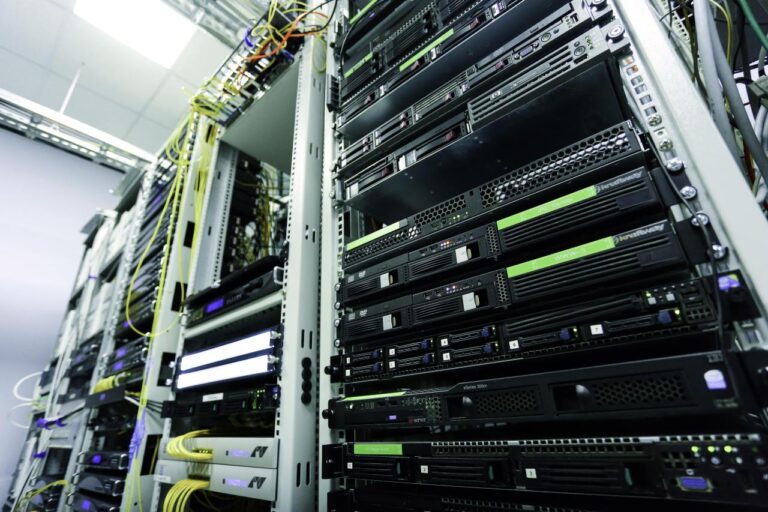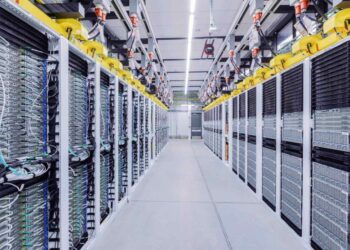In the intricate tapestry of the modern digital world, servers are the essential, unseen threads that hold everything together. They power the internet, drive cloud computing, facilitate artificial intelligence, and manage the vast oceans of data that define our era. Yet, the journey of a server from raw materials to a functioning unit in a data center is incredibly complex, fraught with geopolitical tensions, economic shifts, and technological bottlenecks. Understanding the server hardware supply chain is crucial not only for businesses reliant on IT infrastructure but also for anyone interested in the foundational mechanics of our digital society. This intricate global network, encompassing everything from chip manufacturing to final assembly and delivery, faces unprecedented challenges and demands continuous innovation to ensure the steady flow of the computing power we all depend on.
The Global Interdependence of Server Production

A server is far more than just a box of components. It’s an amalgamation of highly specialized parts, each sourced from different corners of the globe: processors from the US and Taiwan, memory chips from South Korea, storage devices from various Asian countries, and passive components from across Europe and Asia. These components are then assembled into sub-systems, integrated into full server units, and finally shipped to data centers worldwide.
The complexity of this global dance means that disruptions in one region or at one stage can have cascading effects across the entire industry. Recent events, such as the COVID-19 pandemic, geopolitical tensions, and trade disputes, have starkly illuminated the vulnerabilities within this tightly interwoven server hardware supply chain. Businesses, governments, and manufacturers are now more keenly aware than ever of the need for resilience, transparency, and diversification to secure the continuous flow of server technology that underpins digital transformation.
Key Stages and Elements of the Server Hardware Supply Chain
The server hardware supply chain is a multi-layered ecosystem, each stage dependent on the smooth functioning of the others.
A. Raw Materials Extraction and Processing
The journey begins at the very source of essential materials.
- Rare Earth Elements: Critical for magnets, sensors, and other advanced components found in servers.
- Silicon: The primary material for semiconductors (processors, memory, chipsets), extracted from sand and then purified into ingots.
- Copper, Gold, Aluminum: Used in wiring, connectors, circuit boards, and cooling systems.
- Plastics and Resins: For chassis, connectors, and insulation.
- Challenges: Ethical sourcing, environmental impact of mining, geopolitical control over critical mineral reserves, and fluctuating commodity prices.
B. Semiconductor Manufacturing (The Core of the Server)
This is arguably the most critical and complex stage, dominated by a few highly specialized companies.
- Design Houses (Fabless): Companies like Intel, AMD, NVIDIA, and Broadcom design the intricate logic of CPUs, GPUs, and other chips. They rely on Electronic Design Automation (EDA) software.
- Foundries (Fabs): Specialized manufacturing facilities (fabs) that physically produce the semiconductor chips based on the designs. This is an incredibly capital-intensive and technologically advanced process, requiring cleanrooms and highly precise equipment (e.g., Extreme Ultraviolet – EUV lithography machines from ASML). Key players include TSMC (Taiwan Semiconductor Manufacturing Company), Samsung Foundry, Intel Foundry Services (IFS), and GlobalFoundries.
- Assembly, Test, and Packaging (ATP): After fabrication, chips are cut from wafers, packaged into their final forms (e.g., CPUs with heat spreaders, GPUs with memory stacks), and rigorously tested. Companies like ASE Group and Amkor Technology are major players.
- Challenges: Enormous capital expenditure for fabs, extreme technical complexity, long lead times for construction and ramp-up, geopolitical concentration (especially in Taiwan), and intense global demand leading to chip shortages.
C. Component Manufacturing
Beyond the main processors, servers require a vast array of other sophisticated components.
- Memory Modules (DRAM and NAND Flash): Produced by a few dominant players like Samsung, SK Hynix, and Micron. These companies manufacture the underlying memory chips and assemble them into modules (DIMMs for RAM, SSDs for storage).
- Network Interface Cards (NICs): From companies like Intel, Broadcom, Mellanox (NVIDIA), providing essential network connectivity.
- Power Supply Units (PSUs): Manufactured by specialized vendors, ensuring efficient and reliable power conversion.
- Motherboards and Chipsets: Integrating various components and providing the communication pathways within the server.
- Storage Devices: HDDs (Seagate, Western Digital, Toshiba) and SSDs (Samsung, Micron, Kioxia, Western Digital, Intel) providing data storage.
- Passive Components: Resistors, capacitors, inductors, and connectors sourced from a diverse array of suppliers, often in Asia.
- Challenges: Supply chain diversification (avoiding single points of failure), quality control, fluctuating demand for specific components, and geopolitical factors impacting specific regions.
D. Server Original Equipment Manufacturers (OEMs)
These are the companies that design, assemble, test, and market the complete server systems.
- Major OEMs: Dell Technologies, Hewlett Packard Enterprise (HPE), Lenovo, Supermicro, Cisco, IBM, and others.
- Assembly: They integrate the CPUs, GPUs, memory, storage, and other components into server chassis.
- Firmware and Software Integration: Developing and optimizing BIOS/UEFI firmware, management software (e.g., iLO, iDRAC, OpenManage), and ensuring compatibility with various operating systems and virtualization platforms.
- Quality Assurance and Testing: Rigorous testing of the assembled servers to ensure performance, reliability, and security.
- Branding and Marketing: Positioning and selling the server solutions to end-customers.
- Challenges: Managing a complex multi-vendor component supply, maintaining efficiency in large-scale assembly, responding quickly to market demands, and differentiation in a comptitive market.
E. Logistics and Distribution
Once assembled, servers embark on the final leg of their journey.
- Global Shipping: Utilizing air, sea, and land transport to move components between manufacturers and finished products to customers worldwide.
- Warehousing: Storing inventory at strategic locations to facilitate rapid delivery.
- Customs and Regulations: Navigating complex international trade regulations, tariffs, and customs procedures.
- Last-Mile Delivery: Delivering servers to data centers, customer sites, or cloud facilities.
- Challenges: Geopolitical events (e.g., Red Sea shipping disruptions), port congestion, labor shortages, rising fuel costs, climate-related disruptions, and ensuring secure transit for high-value goods.
F. After-Sales Support and Lifecycle Management
The supply chain doesn’t end with delivery.
- Maintenance and Spare Parts: Providing replacement parts and field services to keep servers operational over their lifespan. This requires a separate, efficient supply chain for spare components.
- Decommissioning and Recycling (E-Waste Management): Managing the end-of-life for servers, including secure data erasure, dismantling, and recycling of materials to minimize environmental impact and recover valuable resources. This forms a circular economy loop.
- Refurbishment and Reuse: Opportunities for older server hardware to be refurbished and reused, extending its lifespan and reducing waste.
- Challenges: Complexity of managing spare parts globally, ensuring secure data handling, and finding certified and environmentally responsible recycling partners.
Key Challenges Facing the Server Hardware Supply Chain
The server hardware supply chain is inherently vulnerable to a range of disruptions, many of which have been highlighted in recent years.
G. Geopolitical Tensions and Trade Wars
- Tariffs and Trade Barriers: Imposition of tariffs or trade restrictions between countries can increase costs, alter sourcing strategies, and create uncertainty.
- Technology Nationalism: Governments prioritizing domestic production of critical technologies (e.g., semiconductors) can lead to fragmented supply chains and higher costs.
- Export Controls: Restrictions on the sale of advanced chips or manufacturing equipment to certain countries can impact global supply and technological development. The US-China tech rivalry is a prime example impacting server components.
- Regional Conflicts: Conflicts can disrupt shipping routes, labor availability, and access to raw materials.
H. Global Chip Shortages
- Demand-Supply Imbalance: Unprecedented demand (from data centers, consumer electronics, automotive) coupled with limited manufacturing capacity has led to prolonged chip shortages.
- Long Lead Times: The time it takes to build a new semiconductor fab (several years) means supply cannot quickly adapt to sudden surges in demand.
- Concentration of Manufacturing: The reliance on a few highly advanced foundries (e.g., TSMC) creates single points of failure in the global supply chain.
I. Logistics and Transportation Disruptions
- Pandemics and Health Crises: Global health events (like COVID-19) can disrupt manufacturing operations, cross-border movement of goods, and labor availability.
- Natural Disasters: Earthquakes, floods, or extreme weather events in key manufacturing regions or shipping hubs can cause significant delays.
- Labor Shortages: Shortages of truck drivers, port workers, or factory personnel can cripple logistics.
- Cyberattacks on Logistics Systems: Attacks on shipping companies or port operators can bring operations to a halt.
J. Cybersecurity Risks within the Supply Chain
- Firmware Tampering: Malicious actors attempting to inject malware or backdoors into server firmware during manufacturing or transit.
- Component Substitution: Counterfeit or malicious components being introduced into the supply chain.
- Software Supply Chain Attacks: Compromising software updates or management tools used in server deployment.
- IP Theft: Espionage and theft of intellectual property related to server designs and manufacturing processes.
- Importance of “Silicon Root of Trust”: This feature (e.g., in HPE and Dell servers) helps verify firmware integrity from the hardware level, mitigating some of these risks.
K. Environmental and Sustainability Pressures
- Energy Consumption: The manufacturing of server components (especially chips) and the operation of data centers are highly energy-intensive.
- E-Waste Management: The rapid refresh cycles of servers contribute to a growing e-waste problem, often containing hazardous materials.
- Water Usage: Semiconductor manufacturing and data center cooling require significant amounts of water.
- Ethical Sourcing: Pressure from consumers and regulators to ensure ethical sourcing of raw materials and fair labor practices throughout the supply chain.
L. Technological Obsolescence and Rapid Innovation
- Fast Refresh Cycles: The pace of technological advancement means server hardware can become obsolete quickly, creating pressure on inventory management and leading to e-waste.
- New Architectures: The emergence of new processor architectures (e.g., Arm-based servers, specialized AI accelerators, quantum computing) requires vendors and the supply chain to rapidly adapt.
Strategies for Building a Resilient Server Hardware Supply Chain

To mitigate these challenges, companies are adopting various strategies to enhance supply chain resilience and transparency.
M. Diversification of Suppliers
- Multi-Sourcing: Relying on multiple suppliers for critical components (e.g., CPUs from both Intel and AMD, memory from different manufacturers) reduces dependence on any single vendor.
- Geographical Diversification: Spreading manufacturing and sourcing across different regions to reduce the impact of localized disruptions.
N. Increased Transparency and Visibility
- End-to-End Visibility: Implementing advanced supply chain management (SCM) software and leveraging technologies like blockchain to track components and products from raw material to delivery, providing real-time visibility into the entire chain.
- Risk Monitoring: Proactively monitoring geopolitical, economic, and environmental risks that could impact the supply chain.
O. Regionalization and Near-Shoring
- Localized Production: Governments and companies are exploring “re-shoring” or “near-shoring” (bringing manufacturing closer to home) for critical components like semiconductors to reduce reliance on distant regions and enhance supply security.
- Regional Hubs: Establishing regional manufacturing and distribution hubs to serve specific markets, reducing reliance on centralized global operations.
P. Buffer Stock and Inventory Management
- Strategic Inventory: Maintaining higher levels of safety stock for critical components or finished goods to absorb short-term supply shocks, though this increases warehousing costs.
- Just-in-Time (JIT) Refinement: While JIT reduces inventory, companies are finding a balance with strategic buffering for essential items.
Q. Advanced Planning and Predictive Analytics
- AI and Machine Learning: Leveraging AI and ML to analyze vast datasets (weather patterns, geopolitical news, economic indicators, historical demand) to predict potential supply chain disruptions and optimize planning.
- Digital Twins: Creating digital replicas of the physical supply chain to simulate scenarios and test different mitigation strategies.
R. Enhanced Cybersecurity Measures
- Supply Chain Security Audits: Conducting rigorous security audits of suppliers, particularly for firmware and software components.
- Secure by Design: Requiring security features (e.g., hardware root of trust, secure boot) to be integrated into components from the earliest design stages.
- Continuous Monitoring: Monitoring components and software for tampering throughout the supply chain.
S. Circular Economy and Sustainability Initiatives
- Sustainable Sourcing: Prioritizing suppliers with strong environmental and social governance (ESG) practices.
- Product Design for Circularity: Designing servers for easier disassembly, repair, and recycling, promoting material reuse and reducing waste.
- Energy Efficiency: Focusing on energy-efficient manufacturing processes and products to reduce the overall carbon footprint.
Conclusion
The server hardware supply chain is a testament to global connectivity and technological complexity. It is a critical, yet often vulnerable, system that underpins our entire digital civilization. The recent past has exposed its fragilities, from chip shortages and geopolitical tensions to logistics disruptions and cybersecurity threats.
However, these challenges are driving a crucial evolution. By embracing diversification, enhancing transparency, exploring regionalization, leveraging advanced analytics, strengthening cybersecurity defenses, and committing to sustainability, the industry is building a more resilient, adaptable, and responsible supply chain. The future of server hardware relies on this collective effort—a continuous process of innovation and strategic planning—to ensure that the digital backbone of our world remains robust, reliable, and capable of meeting the ever-growing demands of tomorrow’s technological landscape. Securing the server hardware supply chain is not just an operational necessity; it’s a strategic imperative for global digital stability and progress.









